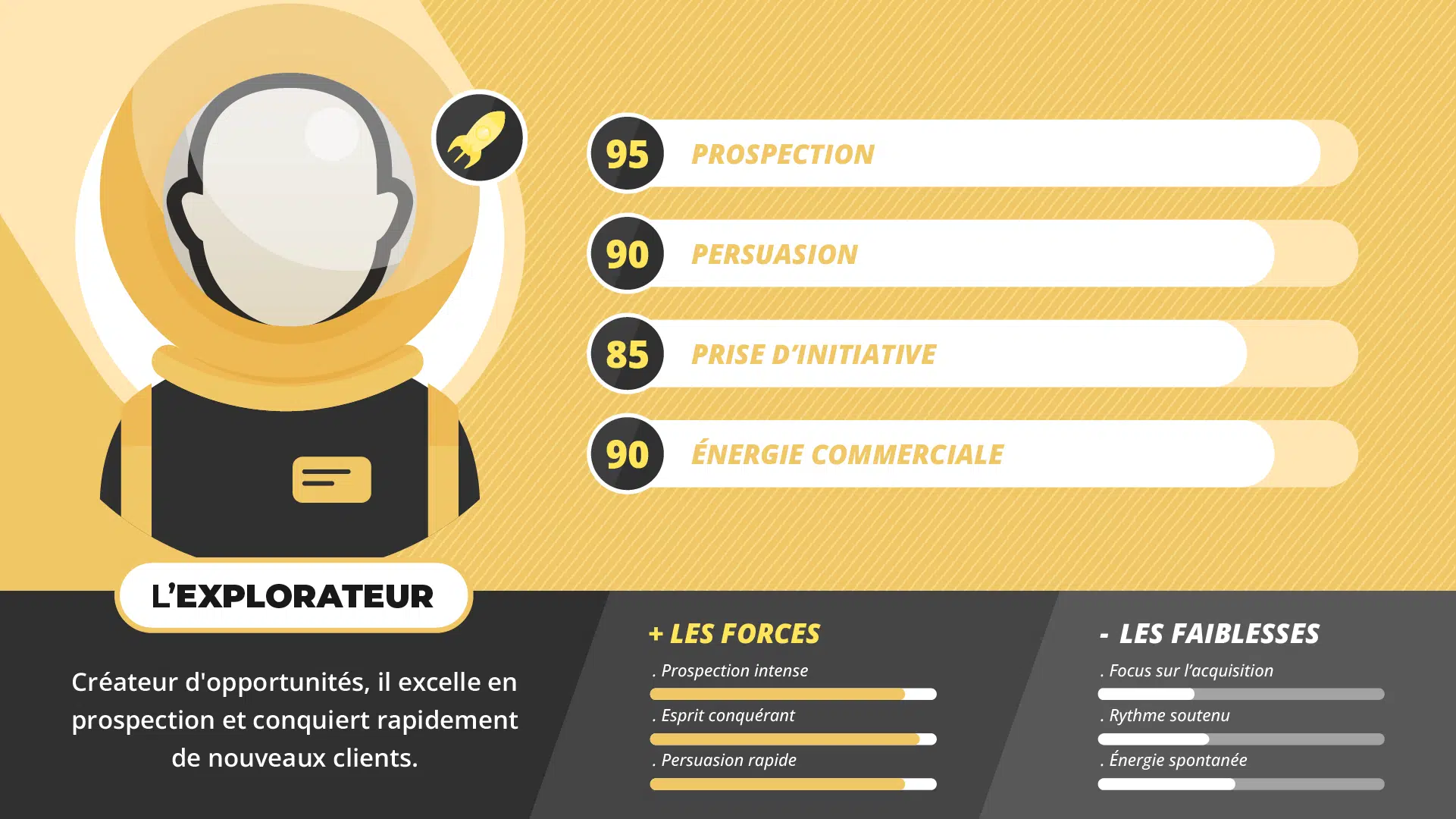Quality is being driven down, product value is being lost, and pressure on suppliers is increasing (On this point, see our previous article Stop lowering prices... Focus on Customer Experience!). Generating profits through increased sales and improved customer retention: this is sustainable, and it requires focusing on your customer experience. Today, the companies that make profits and generate overall value are those that have understood that the customer is their primary asset, and therefore the first lever to be activated.
Are you wondering how to become one of them? Here are 5 tips to help you do just that, based on an analysis of the winning strategies developed by companies at the forefront of the Customer Experience movement. On your marks, get set...Perform!
1. Personalize the customer experience, thanks to intelligent use of data
Never before have brands had access to so much information about their customers as they do today. The term "Big Data", which is on everyone's lips, refers to this mountain of data that companies are amassing, and it's still clearly under-utilized.
A 2015 eConsultancy study[I] reveals that nearly 80% of consumers say that brands don't know them as individuals.
How can we change this? By appropriating this data, and using it to enhance the customer experience. Here are a few pointers:
-
- Establish multi-channel campaigns that are no longer based solely on the brand's desired messages, but on data derived from customer knowledge.
- Carry out individualized nurturing by focusing on behaviors, purchasing patterns and interactions.
- Involve your customers in product design, solicit their suggestions and ask for their opinion on prototypes, thanks to collaborative platforms and social networks.
- Continuously improve the customer experience by drawing on the many methods now available forlistening to and analyzing the voice of the customer: semantic analysis of comments made on social networks, real-time field observation, satisfaction surveys and cold statistics, predictive analysis of behavioral data...
This personalization work needs to be combined with an effort to rethink the messages and marketing pressure you need to apply. By personalizing the customer experience, you can increase the trust your customers place in you, and thus their loyalty.
2. Be responsive: master multi-channel to adapt to customer choices
Today's consumers can access your products and services where they want, when they want, through the channel of their choice. Multi-channel is no longer an option, but a reality.
Your entire company and all your services must therefore become "responsive"[II] :
-
- Your strategy, first and foremost: adapt your offer to your customers' demands and new uses. Test small series, adjust and scale up.
- Your customer service, of course: after-sales service and technical support must be consistent (in terms of discourse and identity), and easily accessible by all means: from the website to the telephone, via chat, video tutorials and paper instructions. Adapt messages and service provision according to the medium, but always with a concern for the overall coherence of the customer experience.
- Finally, your services : do your customers like to order online and collect in-store, or vice versa? Give them this option. Only a third of brands (34%) allow their customers to start a journey on one channel and finish it on another[III]. Yet this is a vital practice to ensure a smoother customer experience.
3. Create a customer community
Your customers want to be involved and share their experience! You don't think so? Well, in the age of collaborative consumption, and with digital word-of-mouth having a multiplied impact (both positive and negative...), there are real opportunities tointegrate groups of customers and unite them around shared emotions, passions, places or desires.
The key to community marketing is to encourage exchanges between consumers of a brand, around shared values. Communication takes place between a brand's "supporters". Not just via social networks: think about creating "quality groups" with representative customers to constantly rethink and improve their shopping experience.
Proposing to your customer community to develop a bond based on passions or desires, and not just raw information about your products, is a very powerful loyalty lever, far more powerful than loyalty cards. Customers feel "committed" to the brand, and become your most effective ambassadors.
Going beyond the logic of rewards linked to the level of purchase, creating a feeling of belonging to a group that likes and shares the same interests, developing a real community relationship... these are all levers that will engage the customer with you.
4. "Enchant your customers: simplify the customer journey and create scenarios
A good customer journey is a simple one! The trend, thanks in particular to new technologies, is to "relieve" consumers by making it ever easier for them to find their way around the store.
According to the3rd AFRC Customer Effort Barometer[I], of the 9 different sectors studied, 69% of the courses evaluated by the French did not require any particular effort.
A sign that brands are making progress in problem-solving. There is no shortage of examples of simplified purchasing processes, whatever the channel used;
Reducing customer effort by optimizing the key stages of the customer journey removes constraints that slow down purchasing or limit customer loyalty. Efficient customer journey, satisfying customer journey!
This wave of simplification will become even more pronounced in the months and years to come, with the arrival of connected objects. Because they are destined to find their way into consumers' homes, certain connected objects will serve as a link, a gateway between the brand and its customers, to quickly resolve a problem, intervene, provide information... or re-order!
Improving the customer experience can also be achieved through small gestures, based on personalized marketing: your customers are sensitive to the little attentions you pay them. A surprise box in a parcel, a humorous message on a shelf, a unique fragrance... These little touches create a surprising andenchanting customer experience.
Which is why - once again - you need to pay particular attention to the proper use of the data you collect! Customers know that they are entrusting you with their personal data: they may be delighted by a relevant message sent at the right time... and conversely, an overly intrusive message, which demonstrates clumsy use of data, risks provoking a refractory posture.
5. Consider the customer as a genuine company "asset
You need to think of your customer as a company asset, in the resource and financial sense of the term. The rhetoric we've heard, read and seen everywhere about "putting the customer first" must be translated into action, because the impact of the customer experience on customer acquisition and loyalty, and therefore, ultimately, on your company's revenues, is real (for a reminder of the link between the quality of the customer experience and companies' stock market performance, read our article : Stop lowering prices... Focus on Customer Experience!)
Companies that claim to have such a concern in their annual report, but don't offer connected customer journeys, or make use of the customer data they collect, are talking an empty talk that nobody believes. Not even them.
How does a company's willingness and ability to make this shift, which positions the customer as an asset , really translate? Through projects and investments geared to improving the quality of the customer experience (particularly in the areas mentioned above), and through the implementation, monitoring and analysis of real performance and return-on-investment indicators.
The quest for continuous improvement in the customer experience can only be achieved by adopting these indicators, which enable the company to adopt a strategy, and take directions, based on facts. Quantify and qualify your efforts. Equip yourself with indicators to measure your progress, adapted to your objectives, your industry and your company's customer experience maturity.
[i] Customer experience: the perception gap between brands and consumers - Infography by E-Consultancy and IBM
[ii] Refers to a website with a responsive design, i.e. one that can be adapted to the reading terminal so that it can be consulted on several different media.
[iii] Barometer of digital practices 2015 Sia Partners / Econocom / Ifop
[iv] AFRC Customer Effort Barometer 2015
For the past 10 years, KESTIO has been helping companies - from SMEs to major corporations - to improve their Customer Experience, with a view to optimizing customer loyalty and acquisition. In particular, we offer exclusive support programs and methods for :
In the field of customer journey improvement, KESTIO has developed the exclusive WELCOME EXPERIENCE© method, based in particular on the expertise developed with companies in the Leisure, Sports and Events sector.






